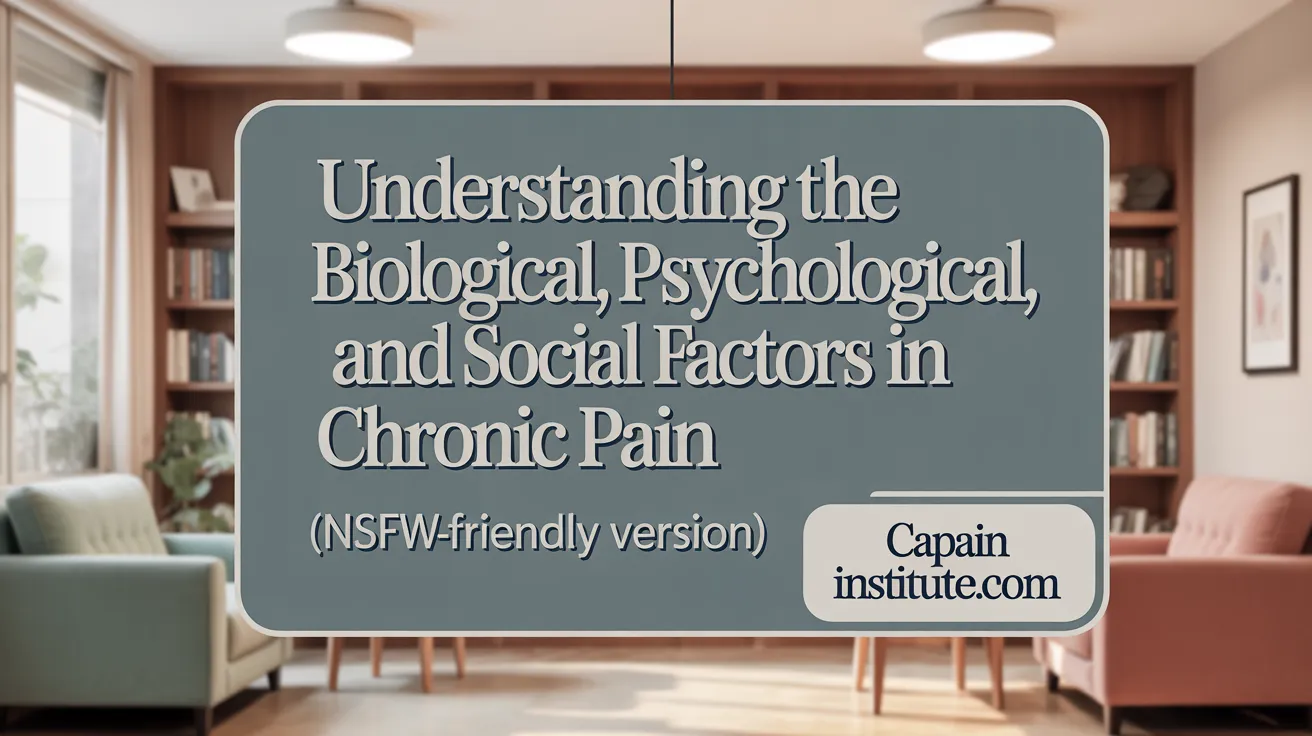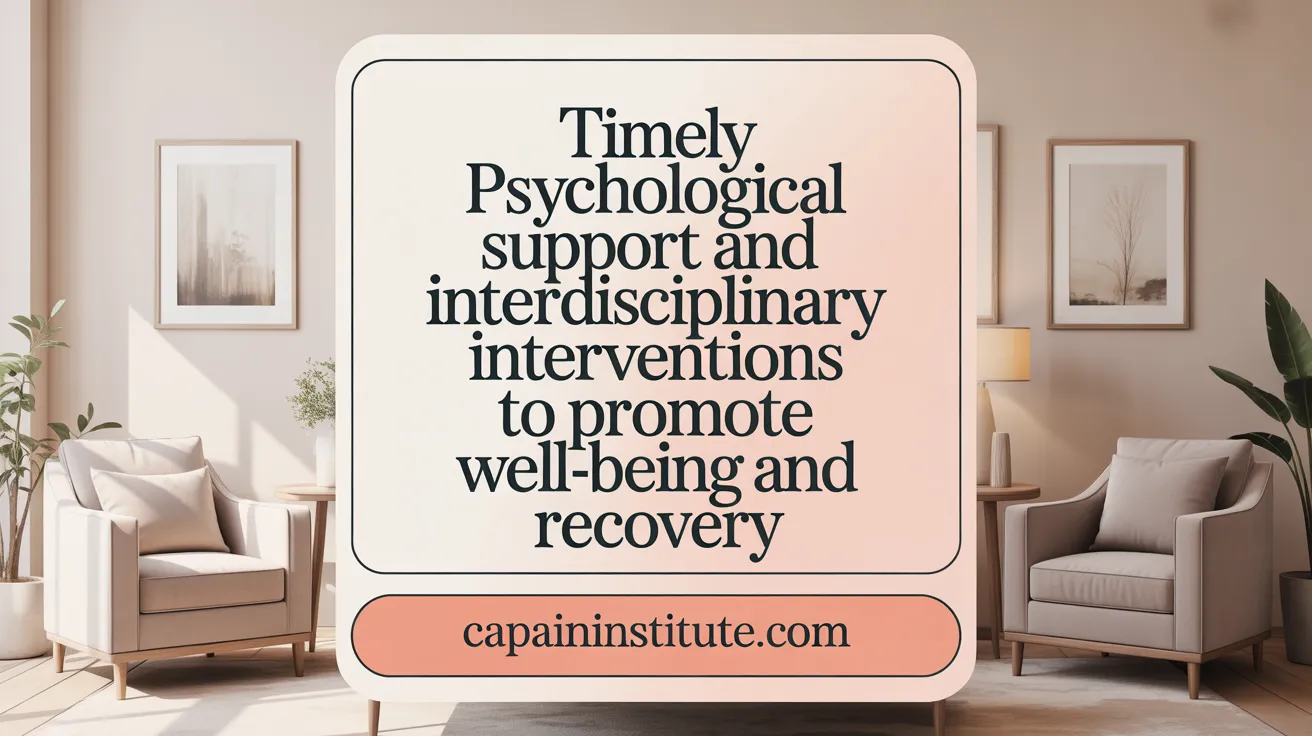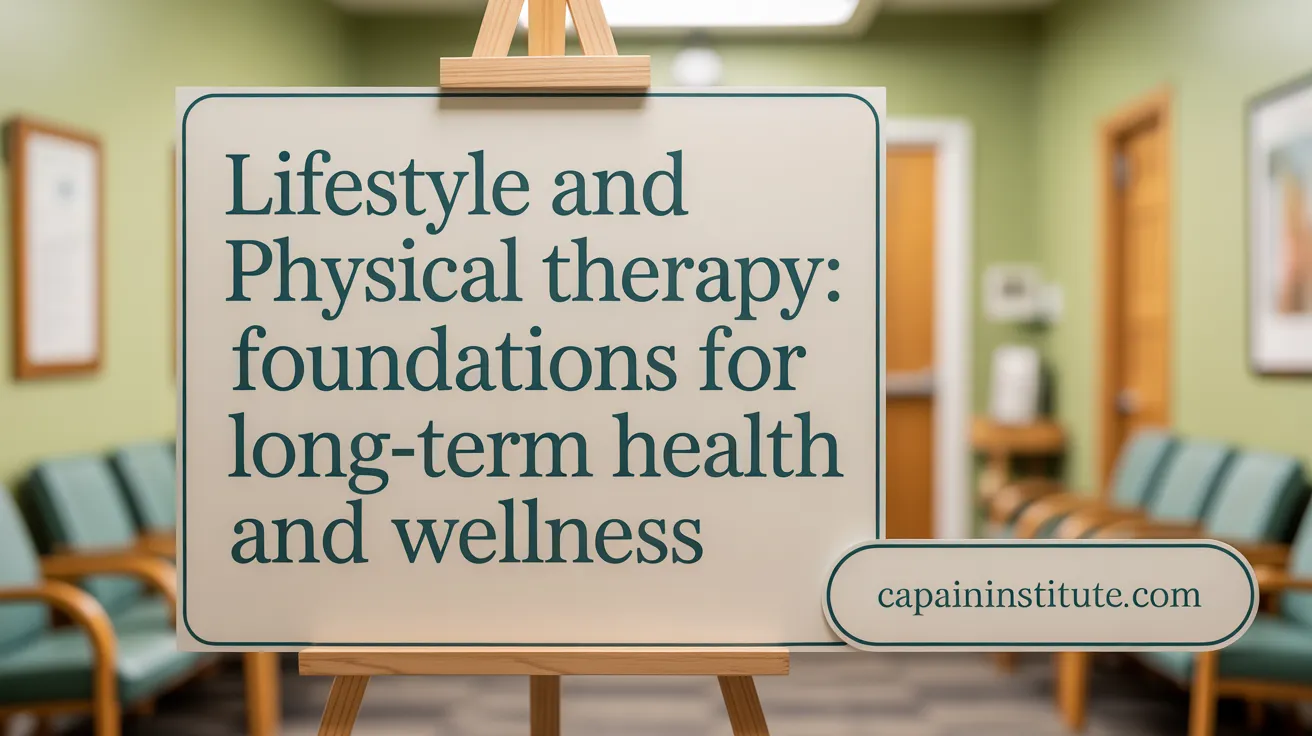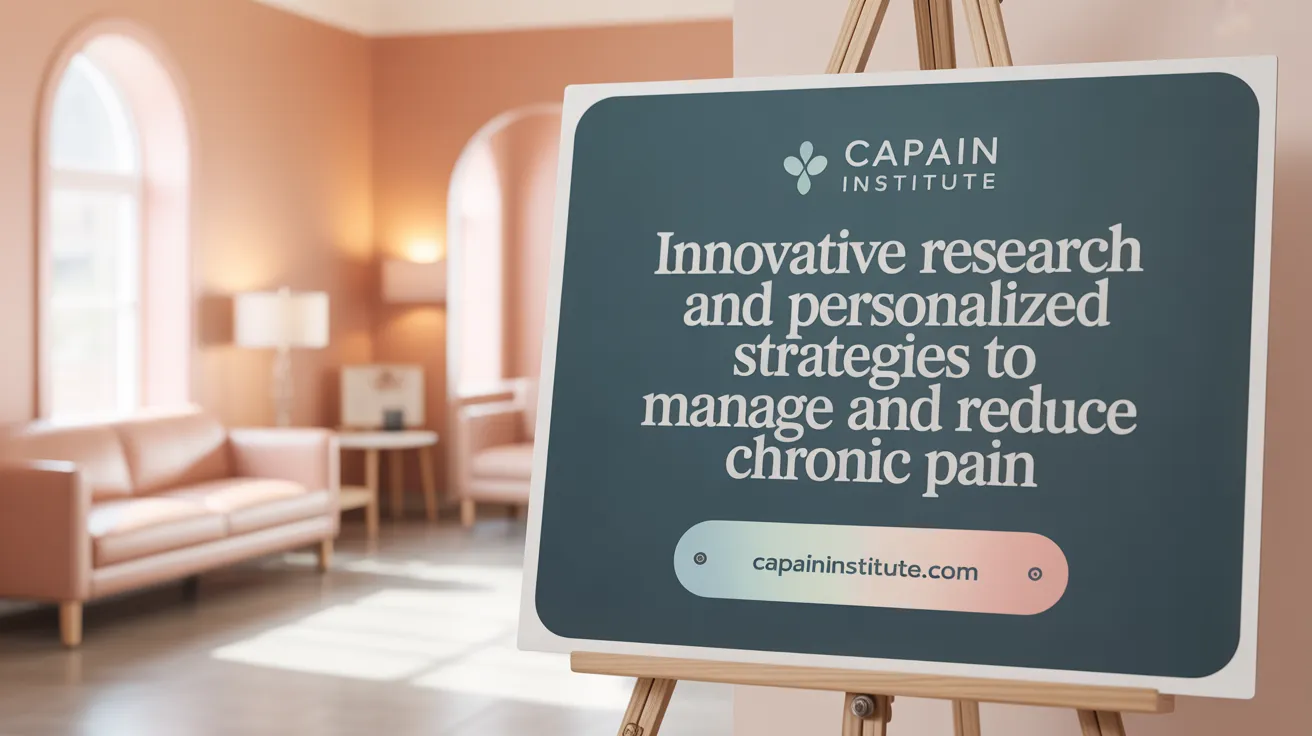Understanding Chronic Pain and Its Impact
Chronic pain, defined as pain persisting beyond three months after injury or surgery, affects nearly 30% of people in the United States, significantly impairing quality of life and daily functioning. Unlike acute pain, which signals immediate tissue damage and typically resolves with healing, chronic pain involves complex neurobiological changes that perpetuate suffering long after the initial injury has healed. Prevention of chronic pain requires early identification of risk factors, multidisciplinary management, and adoption of evidence-based strategies to halt the progression from acute to persistent pain. This article explores best practices for preventing chronic pain after injury, highlighting mechanisms, early interventions, lifestyle modifications, therapeutic options, and emerging research insights.
<!-- VIDEO:eyJsaW5rIjoiaHR0cHM6Ly93d3cueW91dHViZS5jb20vd2F0Y2g/dj1OeXhRNnpvbzBfNCIsImltYWdlVXJsIjoiZGF0YTppbWFnZS9qcGVnO2Jhc2U2NCwvOWovNEFBUVNrWkpSZ0FCQVFBQUFRQUJBQUQvMndDRUFBa0dCd2dIQmdrSUJ3Z0tDZ2tMRFJZUERRd01EUnNVRlJBV0lCMGlJaUFkSHg4a0tEUXNKQ1l4Sng4ZkxUMHRNVFUzT2pvNkl5cy9SRDg0UXpRNU9qY0JDZ29LRFF3TkdnOFBHamNsSHlVM056YzNOemMzTnpjM056YzNOemMzTnpjM056YzNOemMzTnpjM056YzNOemMzTnpjM056YzNOemMzTnpjM056YzNOLy9BQUJFSUFGTUFsQU1CSWdBQ0VRRURFUUgveEFBYkFBQUJCUUVCQUFBQUFBQUFBQUFBQUFBQUFRUUZCZ2NEQXYvRUFEc1FBQUVEQXdJRUJBUUVCQVFIQUFBQUFBRUNBd1FBQlJFU0lRWVRNVkVVSWtGaE1uR0JrUWNWSTZGU3NjSGhKRUp5Z2hZelEyS1MwZkgveEFBYUFRQUNBd0VCQUFBQUFBQUFBQUFBQUFBQUFRSURCQVVHLzhRQUloRUFBd0FDQVFNRkFRQUFBQUFBQUFBQUFBRUNBeEVoQkJJeEV5SXlRV0ZSLzlvQURBTUJBQUlSQXhFQVB3Q29VVVVxZXRCM2hRMm85Qlhya3I3SDdWb25CTnBoenVHMzFQcFlTNEpTTU91ajAyMno3MWFaTnN0c0dRVkl0c1p6eFV4TEtncHNFSVRnZEI2VXRtV3VwVXZXakV1U3JzYVRsSzdWdUxGaXRLRnRMOEhITGNkVHJTc29CejV3RTU3NEZWKzkydUZFdWRoZ3BqTlo1bVhmSVBPQ3NkZS9TallwNnBONjBaZnlWOXFRdEtIcFcxR3lXdTV5blV1Vzlobndzc05ndEowaHhQWTFBOFZ3b1VtekltdHdtWXpyVXhUSDZTZElVbmZHUjNvMk9lcFRldEdZbEpGSlZ3L0VlSEhpWGhwRVZsdGxCam9PbENjRE9PdFUrbWFJcnVuWVVVVVVFZ3IwbENsQWxLU2NkY2VsY25YRXROcWNYOEtSazFLUU9GK0k1N0lsdHFhaXhIRWd0dHYvQU9kSjljQWV0VlpjcXhya3J1OWNKY2pCU0ZKSG1HTnMxNXIxTGdYcXpGOStRMHpKMk9zdG5vbnNCVGFISUVtT2h3ZFNOeDJwWWN2cUlVWk52VkxUTzlGRkZYRm9VVVVVQUZXSGh6aGVaZkdubm9xbVVvYUlDaTR2VDE2Vld3ZDYwTGdlN3hiWncvZEZTQzB0M1UyVU1yVmpYZ25wOHFDbkxWVFB0OGorMTJEaUdIYTNZclBoMHRsN1VXMUtHc3FUMisxU2JCNG5TUEVjK0VGU3lsYVczQ01oUndBUVBROUtkV2ppZUZMZ3NQVEpFZHVXNDQ0VTVWczBjSEJJN2VsTjd2ZEkzNVRFZlprd1Z2UjB0bFFLc3U1QkdRbWtZWFZOOG9aUVkzRXJzUitHaHhrSlhMVWxSV2ZNWEUrWW5QYnkxeXVkdXY4QU5ucXVqanNWMTJDbEt2MGxBakF5ZW4zcXdPM3kySXZFQkxNeGprcUxyemk5WXdDVTdaOTY0TTNtRGJ4S0s1RUVsYnJXVVJsYktTZGxiZDhibWdGZGVVaG8vSDRwbnFiVXFURWFMV2w4SlNvSjNJenFQZW9PUzVmT0tiaWJZVng5VVlxVWVYaEtNZzRKeU90V0daZHJjbThUTkUxa3RmbGhiU29MQkJWNkFlOVFQQXMrQmJZdHdsekpHaHhXbENFSklLeU01SkErMUJPVzB0NkdsNHN0NnZiY2k1U2cwZkNua0xDZGo1Y2VuMXFyWDYwUDJXZXVITDA4MUFCT2c1RzR6L1d0ZmN2TnBZNWlVekdGdFNwZm5BV0RoSzBZSlB5Tlp4K0k4cGlYeEpJZGpPb2RiS1VBTFFjZ25Tbk5CYmh5MDYwMXdWVE5GZU0wYXFacUhFWnBsK1EwMUpJREsxZ0xKN1Zwcy9pUkxrMHdXWWF3R2tuekRmUG9BQU0xbXRwa0pqWFNHOHNqUWg1QlhuK0hPLzdaclJyOWNpMEQrVHBTbDV4R282V2lRRTV3U1NCa2RoWE02LzVMOUlOZTdaVkhiMDdOZlhxaEF0RUhaS3Nrakh5eFZhOEI0Rjk4STFjbFMvSnE5QmpwVTdCdU1obm1KbkpJV0JuSVRnSy92VFc4VGtTVUlHZk9WYWluK0h0KzJQdFZmU1U1eTlzeUpMM2JiSTZpdkdxalZYWExEM1MxejFVVUFJeDVuQUQwcmFiUncxWlhJTWRUc05BTGtGdFNsNVB4SzIxVmlEYm1sUU9hdlVIamU0eVdHcmN6SFoxS1lSRlFSbk94MlBYclNabHpLcTFvdURYRFZ1WnV0dmpPeFVuTVJaZEdUNWxqMXIwcmgrMmVQV2dSVTZSYSthQmsvSC9GMTYxNGx6K0tXM1cxUFdlTW1RNm5rTnVnNUtTYy93RGRzVDc3VnhjZjRwUzJpM0t0YkhpbHh5am41R3JsRHJrNXdLWEptOTM5SkM4Mld5UUkvaW5yZTIyMjA0M293cy9xNStKT005czFYdU5MZGE3U3pHalJXa2w2UThwMExCSncxbnlwNjlQL0FGVHFjdmlhOWVQdHpscmF5T1dWRE9PV1IwS1NWWTNIenFFdjBLLzNScHU0U1lJYWFoSVRHT2c0UGxPTndUbk85TWxHOThzdTY3RGFVejRrYjhzamNwd1pKRHAxRTZTY0ZPZW52VGVSdzdaNDdqazF5Q2tMWWpGeGNRT0Vwem5Zbjk2aVhmOEFpaHErSXV6dHRaUzYxSC81ZXJLZEFHTS9Gbk85ZFZUdUpZcittUmJJNmxNUkR6a3FPUTQxbjEzM3g3VUVkVjlNbVkvRE5uZlM4NTRRQk1oaHRiYVNvL3BGV1J0OWNWV3VON0RBdC9DY1I1cU9sTXNPSVM2NWs1SktDU0RUcTRYZmllRERldVQ5dGFianI1U2hqL29wU2NwR0FjZ0gzcW04U2NhUzcxQlZEa01zb1FYK2RsT2M1eGpIWHBSeVR4cTNTZXlycU9GR2sxVnpLc2ttck53dHdkTHY3Q3BhM3hGaEpVVWh3bzFLY0k2aEl6OU01Njk5NlYzTUxkR3gycFhKWGRYZXJoRmg4UVA4T3BXaUdIMHFUb0REeXRDblc4ZVZXKzNYVjI2Wjlhc3RwNFhza0pmTGFhTHp4SG1rUDRVVTVCeHBHTUEvSWRCdjFxVW15eW1PdHQzUGlHUU5TUU4xcEhRajIvOEFsY2pxdXNuSXUyRnNxZVpONk1kanhicTlNVXpKWThNaHRXbFNWbnA4aDYwc3BsMXA1N1VoWVEyNW8xS0h6eDl3S3RjZ0ttekZMWTFLZFc1cFVrajRTT3BQdHRtdkxMSWVVOHduOVZKUG1LMDVCMzIvbFZlSHJIRmI3ZUFkTEg0NUtkcW8xVmE1WEM4WlNOVFRpbUZuL2NuUHk2L3ZWVWxNdVJaRGpENmRMalp3UlhXdzlSanpmRmxrNUZRYXFLNTZxS3ZKYk9ZeWVsUy9ES2dpOVFsTElDUStqSlArb1ZQY0VXVzJQMm00M2U4Tk9Qc1JOQ1Vzb1ZwMUZSeGttclRBNE9zdHppb2xXcHA1eG96UWtsYXRKRFdCcUgwSjYwakxXVmVDM3lKTVZFa2xiOFpyWExRcEJROEZjMzNJOU1WR3l1UXFUYzRyU29zWitheitrdE1nSzVoQ2puUFluUFN1S2VETE9wdFNDdytOVHJxZWFIZG13bk9DYzB3VHdwYWVRbUNlY1o2b1praVJyOHZzbkZJekx0SDBGQlhCZHRadkRMOHhtUTA0dHhUbitRQWVVRTlkT0ttRTNHMnpVT3QrSVo1VWlTdEc2eDZKQno4c3BxRWs4RTJ0RDJ0cERuS1RHV1ZKNWgyY0FCU2ZzVDlxYTNEaHF4MmxsK2ZMWmVkak5vYUFhUzRRZFN1cHpRSHRaWXBWemlQc3VPaVF6NTRhaUJySDhYU3ZVcTV3WFB6SXFmWks0elpSOFk4NlNrSzI3N2cxUU9HTFZhTHJ4RmNXbWcvSmd0TXFjWVNUcFVycHQrNUZUOGZndTAvbkR5WFE3NFVNTm5sRnp6TnJXY2FTUlJwRGNwRG5pSkVPUmJyMU1NbHRRZmpCYkNtNUpCVUFCNVNrSGZCNzk2dzk0SFdhMlMxY0cyMWJMU0p6VGkxK0pkYlhoWkdRa0hIOHFieXVEYkhBU2h5VkhlZEM1cGJiUzJyZHhLazVRbjc0M3BsbVBJbzRNcHRjTTNDNXhZUUpIT2NDU1IxQ2ZVL1FaTmJGTG5OUUlxSXNkS1dtMkRwUWdiQUpCR1AyUDdHb1d6V0NERTQvbS9sL21qUW1QaEt0V2h4WXdVNTljZWV1M0VqZktDaXY0a3BXRWZRWkErbjlhNW5YMDIxS0hkOXpRL1lKUmNKUVFNZ0xPblBvRHY4QTJycmVHVlNteTR5dFFrTmptSTBLMGxRSTNUOWY1NHJ5bFFVVXJTVktMaUVuYjVWMDVoUkk1bVVwRGJCVUNydU5zL0libjZWeXRjaEs3bm9xY1BVVlRTekdVU1NBcFRtK25QejZxeVBYdlR5T3dsbHBEYmFkYThsYmlnZXF1MzByakVRWmswQjlTaVU1QkNWa3BWdDhYODZtVnFaaXRIQkE1YWVnOUtWK1NXUk9Yb2pyaTZsdVRGajVIcnFJNzRxcThUc0NSRVJPQUFkVDhXUFZKTzJmdlQyZExLcHNkUUdWZWNnZjdUL1VpblRjYkRaanVKSkJUcFhsUFhJd2F2dzA4VlRaQ1hwN0tEbWl2THllUzg0MXFDdENpblVQWEJ4bWtyMFcwYXRsbDRRNHNSWkdKVVNYRVRNaHlRbm1OS1ZwM0J5Q0RVNHY4U2RTVXBidDdiU1V6RXlBbHBXa1lBQTA0K25Xc3oxZTlHczk2WlE1VGV6VmorS2dQbE52U3BwUzNTNGd1L0dsZnAwOU85Y0IrSllUQTVRZ04rTURKam9rbGU0YitYZjNyTU5SNzBhajNwYUY2Y21xcC9GTlhNbGt3VTZIMlVvQ2VaOENnbkdycFhoejhUV3BEanFKbHNROUVjYlFrc2x3N0tSMFZuSHIyckxkUjcwYWozbzBIcHlYdUJ4MFlkNXVOeFREYkJtTkthRGJaMEpiempCR08ySzYyWDhRcEZxdDdyRFRZWElkZURpMzNGYWlRQjhPRC9Pcy93QlI3MGFqM3BqN1packt2eFZiNXlYRVd4STB1S2NLZWQxS2s0N2ZXbzZUK0lwZmdXMks3REN6Q2VTNFZoMGptQk9jRDIySTM5cXpmV2U5R285NldoZW5KczNBenJrMk5ObnNRZ0JNbHJkS2xPSENFZzRTbnVvZzU2OS9lb3JpVzVPS2p1QlMyZVkyb2tKQ1FEalBtOStsT09EMlhYdUdMZkJqeTNVREJjZUtEb1NGTEpVRWxRM09FbEp3TWRkeU1pcFdOWWJJMHBUY21IejNWcEpVcDRuekp6ak9QZnI4aUs1V2RidHNxYjVZV0dTMjlhb3hRc0tjVTJFQUFmUFlmZXBLODJwYVlHaERxZ2hUYVV1cUk2cHlDUjlzMDNqM2F5MmRwU1lyTEtOQ3RLVU1wQXhnQ3E3eFYrSUtIUDhBQjIzenFXa3BXRkl3VTdkOG52MHFtWWxwL3dCTFlUbHFtTUxVeEkxU1BDeHBNWk9WSkRTbTFCS1ZaSXlPdzloMHB4TVJjR1dnMjVGa2tLR3R4U1d5UVBicDBHL1dvQ0h4VGZXM0ZhNUJjYk8yQmdhUjI5L1g3MDRQSGR4WVVRUUhOUXhsUkNTTnpzUjY5VDdVcXdxcTQ1SlZhcmxuR1FtV20rUXY4TktDVXBQbURTdXBJOXZsL3dDUTcxTHJsTkljL1dVbm1xUG01bVJvSFlaRzVwZ2pqQU9wTHJ4UUhqZ09ZU0RrREdQbjBHZjlOT1ZUbUpRWElkU2t2TkR6T1lHZElHZGoyeGlsa21VbHd5blg2VXE3UjB3SnkyVXVCYmVBcENodmxKMy9BTGZTaXZYRXJ2TnVpdElHVW9BVVNNWlBYK1JGTFhaeDFUaGJMMVQwUmRGSlJWcEVXaWtvb0FXaWtvb0FXaWtvb0FXa29vb0dhVHc3SmVURTRjYVM0VXRyanlDdEtkdFJEaUFDZnBYV084NjVPbnVLV1N0TWg1c0hwNWRBT1B1TTBVVno4dmt5L2JLVnhETGtOU1hVTnZMU2xiaENzSHFNZDY2OE1SMm5aUDZqWU9FRTB0RlZ2akdUYjVMUjRkbHR0WlEya2JEMCtkVnE1TXRyQUtrQW5GSlJXZWZrZ0svejNBcHdCV3lTUU1nSGFwNkU4NFlhRkZXNWJCUHp3YUtLMTV2aUpmWkRURktYSmNVbzVKeHY5S0tLSzNUOFVYTHdmLy9aIiwidGl0bGUiOiJIb3cgZG8gSSBQcmV2ZW50IGFuIEluanVyeSBmcm9tIEJlY29taW5nIENocm9uaWMgUGFpbj8iLCJzbmlwcGV0IjoiSSB3YW50IHRvIGRpc2N1c3MgdGhyZWUgd2F5cyB5b3UgY2FuIHByZXZlbnQgYW4gaW5qdXJ5IGZyb20gYmVjb21pbmcgY2hyb25pYyBvciBpZiB5b3VyIHBhaW4ncyBhbHJlYWR5IGNocm9uaWMgaG93IHlvdSBjYW4gbWl0aWdhdGUgdGhhdC4ifQ== -->Mechanisms and Risk Factors Behind Chronic Pain Development

What are the mechanisms and risk factors that contribute to the development of chronic pain after an injury?
Chronic pain following an injury results from a complex combination of biological, psychological, and social influences. Biologically, nerve damage and ongoing peripheral nociceptive signals—originating from persistent tissue inflammation or nerve injury—set the stage for long-term pain.
Neuroplastic changes in the central nervous system further perpetuate pain. Central sensitization, a process involving increased excitability of neurons in the spinal cord and brain, plays a major role. This includes the activation of glial cells that release inflammatory mediators, amplifying pain signals even after tissue healing.
Peripheral sensitization also contributes, where nociceptors (pain receptors) become hyperreactive due to inflammatory substances and nerve damage, making normal stimuli painful.
Psychological factors, such as anxiety, depression, and the tendency to catastrophize pain, can heighten pain perception and lower pain thresholds. Social aspects, including lack of social support or stress, further influence the transition to chronic pain.
Personal risk factors encompass several elements. Severity of the injury, such as spinal cord trauma or multiple fractures, increases the likelihood. Females and individuals with higher body mass indices (BMI) are more susceptible. Preexisting mental health issues and inadequate control of acute pain during the initial injury phase can also elevate risk. Additionally, genetics may predispose individuals, with over 150 genes linked to pain susceptibility.
Early psychological and physical symptoms serve as warning signs. Widespread pain, high pain intensity, multiple injuries, and stress-related symptoms shortly after injury can predict the development of chronic pain. Recognizing these indicators allows healthcare providers to implement targeted preventive strategies to halt the progression from acute to chronic pain.
Early Identification and Evidence-Based Early Intervention Strategies

Why is early pain assessment and management critical?
Timely recognition and treatment of pain immediately after injury or surgery are essential in preventing the transition to chronic pain. Our nervous system can undergo changes over three months of persistent pain, leading to central sensitization—a state where pain becomes amplified and less localized. Addressing pain early helps to halt these neuroplastic changes and minimize long-term disability.
How can screening tools identify individuals at risk?
Healthcare providers utilize various screening tools and assessments to identify patients likely to develop chronic pain. These tools evaluate factors such as age, psychological state, severity of initial injury, and genetic predispositions. Early identification enables personalized intervention plans, focusing on multimodal approaches, to reduce the likelihood of persistent pain.
What does multimodal pain management entail?
Multimodal analgesia involves combining different therapies and medications to target pain through multiple pathways. Evidence supports the use of anti-inflammatory medications, regional anesthetic techniques like epidurals, and pharmacologic agents such as gabapentinoids (gabapentin and pregabalin) and NMDA antagonists like ketamine. These strategies help prevent peripheral and central sensitization, reducing the risk of chronic pain development.
How do psychological interventions contribute?
Psychological support plays a pivotal role in early intervention. Anxiety, depression, and catastrophizing can amplify pain signals and hinder recovery. Incorporating cognitive-behavioral therapy (CBT), stress management techniques, and patient education can address these psychological factors. Early psychological intervention fosters resilience and promotes active coping, reducing the risk of long-term pain syndromes.
What are the guidelines for timely intervention?
Clinical guidelines recommend a prompt, interdisciplinary approach for managing acute pain, especially if it persists beyond three months. Strategies include goal-oriented physical therapy, patient education on activity pacing, and psychosocial support. Pharmacologic treatments should be carefully tailored, and interventions like venous blocks or antivirals for conditions such as herpes zoster should be administered early. Regular follow-up and reassessment allow for adjustments, ensuring optimal outcomes and reducing the chances of chronic pain development.
| Aspect | Strategy | Additional Details |
|---|---|---|
| Early Pain Assessment | Use screening tools and patient history | Identifies risk factors and severity |
| Pharmacologic Options | Multimodal analgesia, gabapentinoids, ketamine | Targets various pain pathways |
| Psychological Support | CBT, stress reduction, education | Addresses mental health contributors |
| Timing of Interventions | Initiate within days to weeks | Prevents neuroplasticity changes |
| Monitoring and Reassessment | Regular follow-ups | Ensures effective management and adjustments |
Lifestyle Modifications and Physical Therapy: Cornerstones of Prevention

What lifestyle modifications and physical therapy techniques are effective in preventing chronic pain after injury?
Preventing the transition from acute to chronic pain involves a multifaceted approach centered around lifestyle modifications and physical therapy. Regular engagement in low-impact exercises such as walking, swimming, and gentle stretching facilitates improved mobility, strengthens muscles, and helps reduce pain levels. These activities support joint health and prevent stiffness, which are crucial in recovery.
Physical therapy plays a vital role through techniques like manual therapy, targeted therapeutic exercises, and modalities such as heat or cold application. These interventions aim to restore function, alleviate muscle tension, and prevent long-term discomfort. For example, manual therapy can improve joint mobility, while exercises enhance flexibility and strength.
Additionally, nutrition significantly influences pain prevention. A balanced, anti-inflammatory diet rich in fruits, vegetables, whole grains, and omega-3 fatty acids supports tissue healing and helps diminish systemic inflammation that can perpetuate pain.
Maintaining good hydration and adopting healthy sleep habits are also important. Adequate sleep promotes tissue repair and reduces pain sensitivity, while hydration aids overall bodily functions.
Effective stress management techniques, including mindfulness meditation, deep breathing exercises, and relaxation therapies, can lower nervous system reactivity that amplifies pain perception.
Avoiding harmful behaviors such as smoking and excessive alcohol intake is essential, as these habits increase inflammation, impair healing, and elevate long-term risk.
Integrating these lifestyle strategies with physical therapy not only enhances healing but also reduces the risk of chronic pain development. A comprehensive approach focusing on physical activity, diet, mental health, and habits creates a supportive environment for recovery and long-term well-being.
Alternative and Holistic Approaches to Complement Conventional Prevention
What alternative therapies and holistic approaches have been shown to assist in preventing chronic pain?
Integrating alternative and holistic therapies with traditional medical care can significantly contribute to preventing the development of chronic pain. These approaches focus on calming the nervous system, enhancing physical resilience, and promoting overall well-being.
One widely recognized method is acupuncture, which has demonstrated pain-relieving effects especially in cases of back pain, osteoarthritis, and other musculoskeletal issues. It involves stimulating specific points on the body to modulate pain signals and improve energy flow.
Mindfulness meditation, diaphragmatic breathing, and progressive muscle relaxation are breathing and mental strategies that help lower pain intensity. They achieve this by calming the nervous system and reducing stress, which often exacerbates pain perception.
Physical activity-based therapies such as yoga and tai chi are particularly effective in improving flexibility, balance, and body awareness. These practices not only reduce physical discomfort but also lessen emotional distress linked with persistent pain.
Massage therapy can also play a supportive role by decreasing muscle tension, improving circulation, and accelerating recovery processes. It alleviates localized discomfort and enhances relaxation.
Biofeedback is another technique where patients learn to control physiological functions like muscle tension and heart rate that influence pain levels. By gaining this control, individuals can better manage their pain responses.
While the evidence supporting each therapy varies, these approaches are generally considered safe when performed under professional guidance. Incorporating them as complementary strategies within a comprehensive pain prevention plan can lead to reduced dependence on medications and improved quality of life.
It is important to remember that these therapies should not replace conventional medical treatment but serve as valuable adjuncts. Consulting healthcare providers ensures personalized and effective integration into overall pain management strategies.
For further reading, search terms such as "holistic therapies for chronic pain prevention" can provide additional insights into these integrative approaches.
Emerging Research and Future Directions in Chronic Pain Prevention

What recent scientific research and insights highlight the most effective methods for preventing chronic pain?
Recent scientific investigations shed light on innovative and personalized strategies to prevent the transition from acute to chronic pain. Advances in neuroimaging and neurophysiology have deepened our understanding of how the central nervous system processes and modulates pain signals. These studies reveal how brain regions involved in pain perception and emotional regulation—such as the thalamus, somatosensory cortex, and limbic areas—contribute to the development of persistent pain.
Building on these insights, new pharmacologic developments are focusing on non-addictive options. Agents like NMDA receptor antagonists and novel analgesics aim to reduce pain without the risks associated with opioids. These medications target peripheral and central sensitization processes, such as neurogenic inflammation and long-term potentiation, which underlie chronic pain states.
In addition, neuromodulation techniques are gaining traction as promising non-pharmacologic treatments. Methods like transcranial magnetic stimulation (TMS) and innovative nanotechnology-based neuromodulation therapies can alter dysfunctional neural circuits involved in pain. These approaches offer tailored pain relief with fewer side effects.
Genetic research is also advancing, enabling the identification of individuals biologically predisposed to chronic pain. Understanding genetic polymorphisms allows for early risk assessment and personalized interventions. Meanwhile, considering social determinants of health—such as stress levels, social support, and lifestyle factors—can help craft comprehensive prevention plans.
Integrating biological insights with behavioral therapies, lifestyle modifications, and social support forms the backbone of future care models. These multidisciplinary frameworks promote early intervention, improve patient outcomes, and reduce reliance on medications, paving the way for safer and more effective chronic pain management.
In summary, the latest research emphasizes personalized, biologically informed strategies that combine technology, pharmacology, and comprehensive care to prevent the onset of chronic pain and improve quality of life.
Integrating Best Practices to Halt Chronic Pain Development
Preventing the transition from acute injury-related pain to chronic, persistent pain requires a comprehensive, individualized approach early in the injury recovery process. Understanding the complex mechanisms that underpin chronic pain and recognizing key risk factors enable timely, targeted interventions designed to stop maladaptive neuroplastic changes. Evidence-based multimodal pain management, including appropriate pharmacotherapy and physical therapy, combined with healthy lifestyle modifications, psychological support, and patient education, form the foundation of best practices. Complementary therapies and holistic approaches further enhance outcomes by promoting physical and mental well-being. Emerging research continues to refine personalized strategies and novel treatments, offering hope for improved prevention. Through coordinated care and informed patient engagement, chronic pain after injury can often be prevented, significantly improving quality of life and reducing long-term healthcare burdens.
References
- Preventing Pain: An Introduction
- Preventing Chronic Pain following Acute Pain: Risk Factors ...
- How to Prevent Chronic Pain After an Accident
- Tips for managing chronic pain
- What Can You Do for Chronic Pain Management?
- Pain Management Best Practices Inter-Agency Task Force ...
- 8 simple ways to manage your chronic pain
